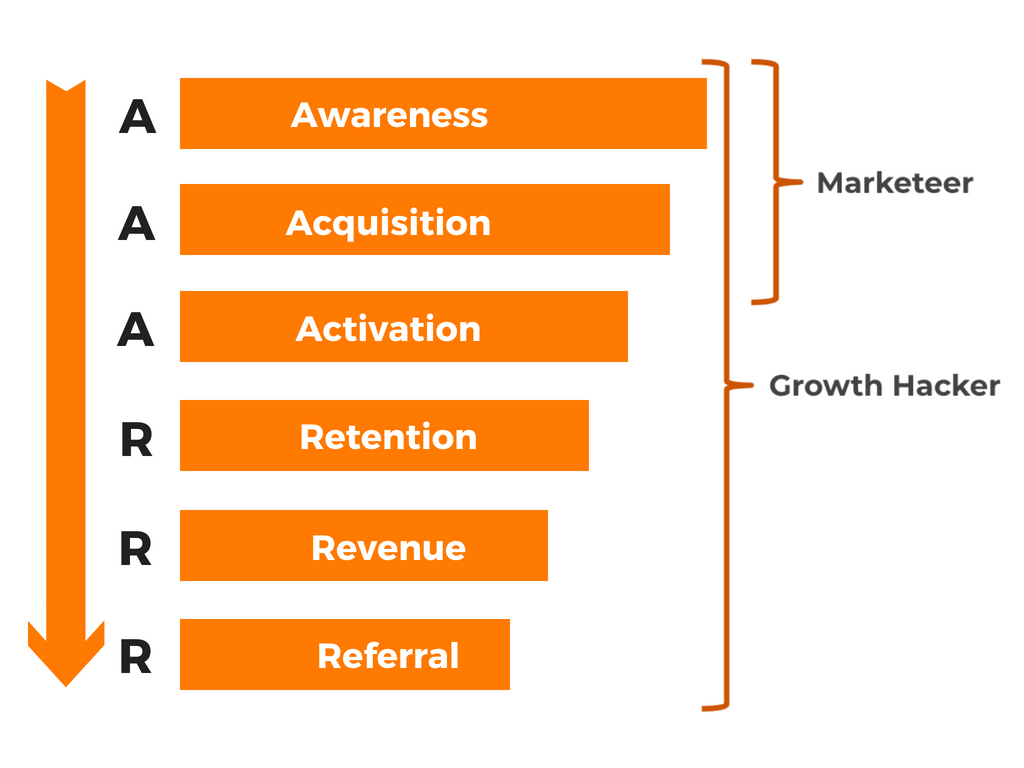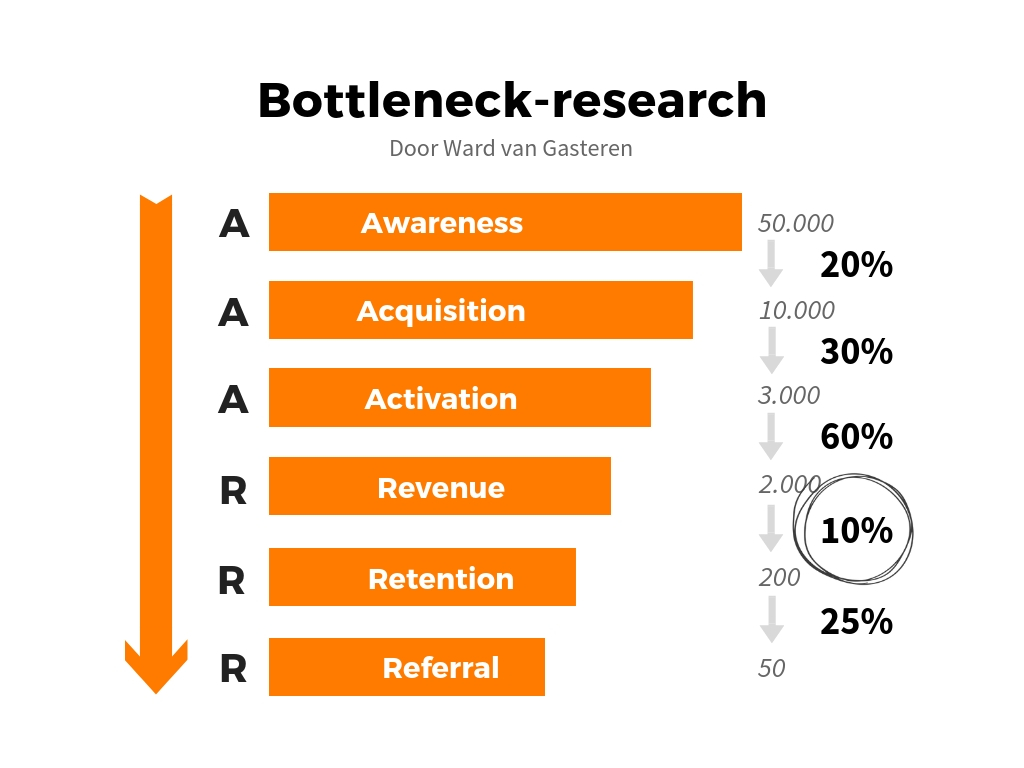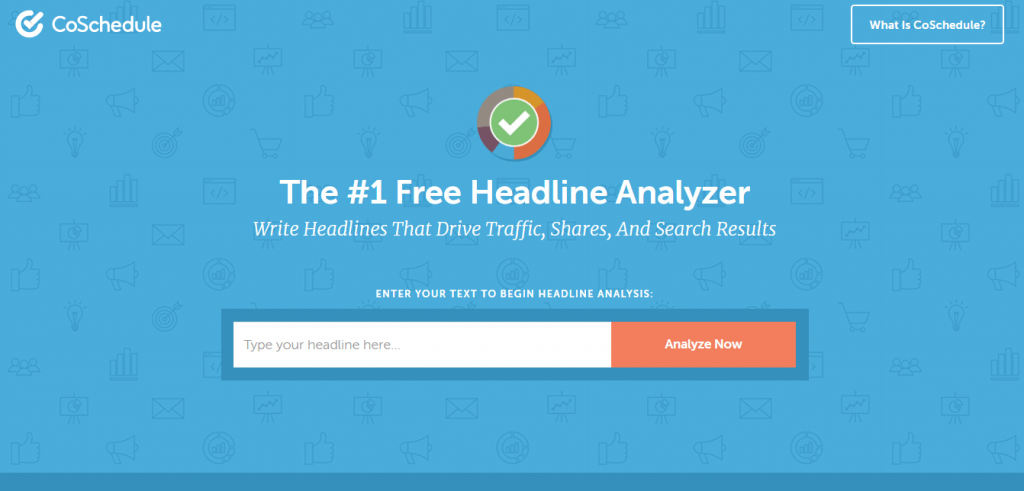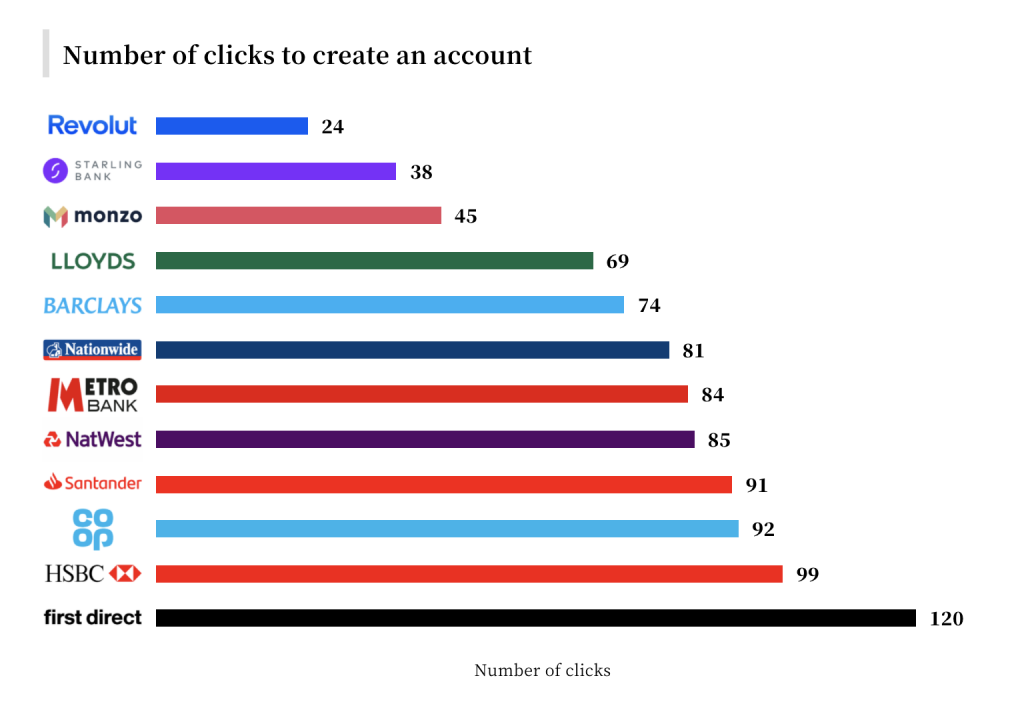The Pirate Funnel helps you pinpoint where your business is losing customers
In this article:
-
What is the AARRR framework aka The Pirate Funnel?
-
What does AARRR stand for?
-
How can you apply The Pirate Funnel?
-
When The Pirate Funnel pinpoints where your business is losing customers – problems and solutions
WHAT IS THE AARRR FRAMEWORK AKA THE PIRATE FUNNEL – DEFINITION
The AARRR framework was developed in 2007 by Dave McClure, Silicon Valley entrepreneur, prolific investor and a former Director of Marketing at PayPal.
Pronounce it! You sound a lot like a pirate, don’t you?
Hence The Pirate Funnel name.
WHAT DOES AARRR STAND FOR?
AARRR is the acronym for Acquisition, Activation, Retention, Referral and Revenue.
The framework depicts a series of consecutive stages in your customer’s lifecycle.

image source: growwithward.com
Acquisition: users come to the site from various channels.
How did your users discover your site? Where are they coming from? How many people visit your website?
Acquisition channels: SEO, SEM, blogs, affiliates, PR, social media, campaigns, contests, influencers, email etc.
Activation: users enjoy the first visit.
What are they doing while on your site? How much time do they spend browsing your site? How many pages do they visit? Are they subscribing to your email newsletter? Are they downloading your PDF paper? Are they checking your product features?
Activation metrics: time on site, number of pages visited, sign-ups, content download (lead generation), app installs, comments.
Retention: users return to your site multiple times.
Retention metrics: email open rates, CTR, browser notifications, social media following.
How many users come back?
Referral: users like your products enough to refer to others.
How many people refer friends to your business?
Referral metrics: backlinks, blogs, social media posts etc.
Revenue: users buy your product.
How many visitors turn into customers?
Revenue metrics: sales, both in-store and online.
In recent years, Dave McClure’s framework has been updated with another stage: Awareness.
Before users visit your website, they become aware of your brand and products. How? By conducting awareness campaigns. They can be TV ads, social media ads, OOH, radio ads, influencer marketing, SEM etc.
Awareness: people reached through awareness campaigns.
How many people do you reach?
Awareness metrics: foot traffic, social media following, traditional advertising audience, social advertising reach etc.
If your business is doing awareness campaigns, then the AARRR framework gets an additional stage and is actually AAARRR or A3R3.
Depending on the profile of your business and whether or not you have a short customer journey, the Rs are interchangeable. For some businesses, Activation is followed by Revenue, instead of Retention and the customer journey ends with the Referral stage.
If the customers have an overall positive experience, there’s an increased chance they will recommend your product after purchase. On the contrary, if the customers have a poor experience doing business with you, their journey ends with the revenue stage. Neither the retention stage nor the referral stage will take place.
HOW CAN YOU APPLY THE PIRATE FUNNEL?
The goal of the (A)AARRR framework or Pirate Funnel is to map out your customer’s journey so your marketing team can create content for every stage of the journey.
This framework is also designed to measure conversion and identify your business’ best-performing channels, largest-volume channels and lowest-cost channels.
You can apply this framework to measure the conversion rates of your website, campaigns, various marketing channels etc.
HOW TO USE THE PIRATE FUNNEL TO PINPOINT WHERE YOUR BUSINESS IS LOSING CUSTOMERS
The Pirate Funnel is a tool to help you map your customer’s journey from awareness, the first stage in your funnel to referral, the stage where the funnel gains fresh momentum at no additional cost for your business.
But is there a bottleneck in your funnel which doesn’t allow customers to advance to the next stage? Are you losing customers on the way?
To find out whether there’s a gap in the funnel, turn the numbers into percentages: calculate the rate of every stage beginning with awareness as you see in the image below.
Out of the total number of people in the awareness stage, what is the rate of acquisition i.e. people visiting your website?
Out of the number of website visitors, what is the activation rate?
Make the calculations for every stage of the funnel and you get an overview of your customer lifecycle.
Which percentage is the lowest? Once you have identified which stage holds the bottleneck, look for solutions to eliminate it and increase the number of the customers flowing effortlessly from the first to the last stage.

image source: growwithward.com
ELIMINATING THE BOTTLENECK
Low Awareness Metrics
How many people visit your website? If the number is too low, then you have an awareness problem.
Look for creative solutions to drive awareness. You can do marketing and PR campaigns, advertising in traditional media and social media, influencer campaigns etc.
To keep the awareness numbers high, experts like Les Binet recommend that brands do brand-building campaigns in parallel with sales activation.

The ideal balance between short- and long-term marketing strategies is 75% brand-building and 25% sales activation. Learn more.
Low Acquisition Metrics
People are aware of your brand but they visit your website in low numbers.
Review your awareness campaigns: are they reaching the right audience? Is your brand relevant to your audience?
Is your message delivered through the right channel?
Also, check the copy and look for ways to improve it such as using social proof, scarcity or other principles of persuasion.
If you are not familiar with the Seven Principles of Influence, they are reciprocity, commitment & consistency, liking, scarcity, authority, social proof and unity.
Another way to improve your acquisition metrics is to write a killer headline to your content.
No matter how great your content piece is, no one is going to read it if your headline doesn’t deliver.
With CoSchedule’s headline analyzer, you can write headlines that persuade the reader to click on them.

Low Activation Metrics
Once people access your campaign’s landing page or your website’s homepage, how do you turn them into leads?
Let’s say you have a 3-page visit set as one of the activation metrics. Does your content lead your visitor to more pages on your website with internal links? Does your web copy persuade them to download your PDF? Is your blog content so good that they subscribe to get more?
Low Retention Metrics
People returning to your website or making a repeat purchase is an indication that you are doing a good job providing them with what they need. Your offer is the perfect solution to their problem.
If the retention rate is low, you need to take a step back and review your content or your offer.
What prevents your business from earning repeat sales?
Customers shopping with your company repeatedly means fewer costs and increased revenue. According to a HubSpot report, the customer acquisition cost or CAC has increased by over 50% in the last five years.
It’s more expensive to earn new customers than to keep the current ones. So here are a few ideas on how to accomplish this goal:
- Start a loyalty program
- Offer personalized customer service.
- Offer freebies
- Improve your email open rates
Low Referral Metrics
Happy customers tell their friends and family about your brand. It’s every brand’s dream: gain more customers at no additional cost through word of mouth.
But to achieve this, you need to provide existing customers with excellent service. Go above and beyond for your customers. Delight and surprise them. Actively commit to exceeding their expectations.
Take a cue from Amazon. The giant eCommerce is a leader in customer experience. They obsess over their customers and constantly innovate to keep them happy and engaged. Learn more.
Low Revenue Metrics
Your customer journey is working flawlessly. You have good conversion rates at every stage of the journey except revenue. Your sales numbers are low. Something somewhere is clogging up your pipeline and its name is friction.
How many clicks do your customers need to make a purchase on your eCommerce site? Is your buying process easy to navigate?
Here’s a relevant example from user experience expert Peter Ramsey:

Join the Conversation
We’d love to hear what you have to say.
Get in touch with us on our LinkedIn Group, Facebook Group or Twitter.

